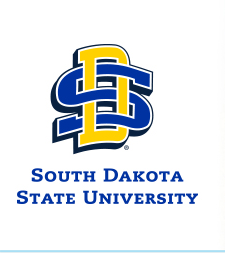-

Development and Assessment of Courses in Defensive Security and Ethical Hacking
Pann Ajjmaporn and Jeremy Straub
In order to combat malicious actors of the digital age, cybersecurity experts have quickly become essential in almost every company. New employees must be ready to 'hit the ground running' in this dynamic and frequently changing fields. To effectively prepare students for careers in cybersecurity , enhancements are needed to traditional class-based lecture techniques. This work presents and evaluates two different methodologies used in cybersecurity education: a gamification approach which used a capture the flag model and competition -based approach.
-

Integrating Hybrid-Flexible Course Delivery with General Education Computer Science Courses
Benjamin Bernard and Jeremy Straub
The Hybrid-Flexible (HyFlex) course delivery format was developed at San Francisco State University to make SDSU’s instructional technologies master’s degree program accessible to working adults. Under the HyFlex model, instructors build content for both a fully online course and for a traditional ‘face-to-face’ classroom environment. Both have the same learning outcomes for each week, so that students can move between online and in-person participation in the course seamlessly. This poster covers the adaptation of CSCI 159, Computer Science Problem Solving, to the HyFlex model. The implementation of this course differs from the model in that it was entirely online but implemented HyFlex principles.
-

Experiments on the Neurocognitionof Creativity
Rafal Jonczyk, Danielle Dickson, Gul E. Kremer, Zahed Siddique, and Janet G. van Hell
Creative production is often correlated to divergent thinking to produce many different ideas; hence, for the engineering education domain, design learning presents opportunities to enhance divergent thinking.
-

A TRIZ-based Tool for Remanufacturing Using Additive Manufacturing: RE-AM-TRIZ
Edward Rojas, Eric Exner, Kundan Paudyal, Omar Al-Araidah, and Gul Okudan Kremer
Remanufacturing is a process of returning a used product to at least the original equipment manufacturer (OEM) performance specification from the customers’ perspective and giving the resultant product a warranty that is at least equal to that of a newly manufactured equivalent. Even though there are many benefits of remanufacturing, there are barriers when it comes to its implementation. There can arise contradictions when dealing with different products, or in different steps during the remanufacturing process. A method to solve contradictions like those is TRIZ, which is a problem-solving method that can resolve technical contradictions.
-

Development of Critical Consciousness Scale for Civil Engineering Students
Tonmoy Sarker, Dr. Cristinia Poleacovschi, Dr. Mollie Appelgate, Dr. Kate Swalwell, Dr. Christa Jackson, and Dr. Kristen Cetin
Recent research shows the engineers continue to think less critically at the end of their undergraduate engineering degrees and fail ro adhere to their professional responsibility. A key component to addressing these issues includes assessing engineers' critical consciousness (CC). The development of a Critical Consciousness Scale (CCS) is important for civil engineering education as it assists practitioners and educators with better means to assess whether ant interventions (e.g. ABET) and indeed efficacious.
-

The Challenges of Engineering Education, Engineering Practice, Code of Ethics, and Social Justice
Rachel Shannon
Engineering has always been human-centered through the technologies we provide to enrich and make our lives more convenient. The engineering code of ethics uphold that engineers should put “the safety, health, and welfare of the public” first. However, we argue that the code of ethics is not enough, and that we need to reinforce human-centered design in engineering education through designerly ways of thinking, reflective practices, and being more student-centered.
-

Lemons to Lemonade: Refining an Active Learning Course for Delivery During a Pandemic
Jeremy Straub
The Spring semester of 2020 was a time of unanticipated and unprecedented rapid change for higher education in the United States. The COVID-19 pandemic struck the United States midway through the semester forcing colleges and universities to rapidly take courses online with minimal time to prepare. North Dakota was, comparatively, fortunate in that the transition occurred over spring break; however, initially the online period was only supposed to last for two weeks. This poster presents the process that was used to rapidly change an active learning course, which was designed for in person delivery, over to being held entirely online.
Printing is not supported at the primary Gallery Thumbnail page. Please first navigate to a specific Image before printing.
